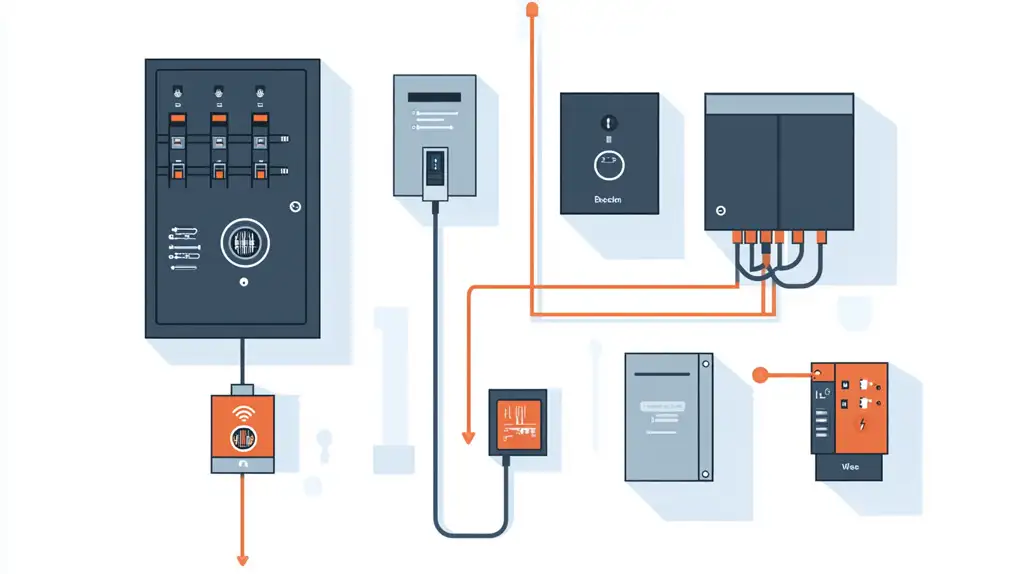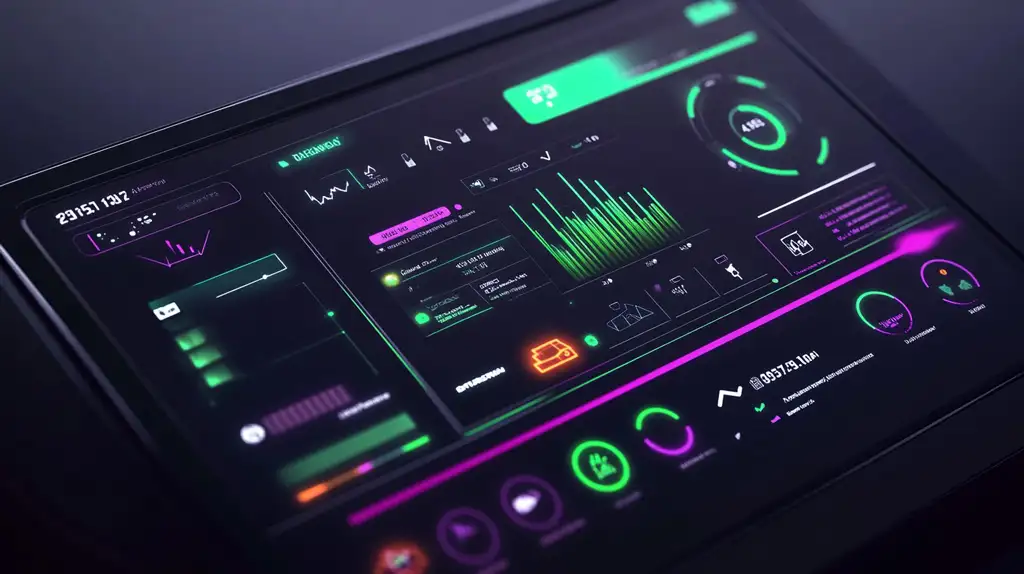How Many Amps Do You Really Need? Efficiency, Cost, and Smart Future Explained
1: Amperage Basics – Current, Power, and Charging Levels
Before we dig into amperage, let’s quickly review some key terms:
- Amps: This measures the strength of the electrical current, like the “volume” of water flowing.
- Volts: This measures electrical potential, like the “pressure” pushing the water.
- Watts/Kilowatts (kW): This measures power, which is the product of current and voltage (P = V x A). Your charging power dictates how fast your EV charges.
Home EV charging primarily uses two levels:
-
Level 1 Charging (120V):
- Typical Amperage: 12-16A.
- Charging Speed: Slow, usually adding 2-5 miles (about 3-8 km) of range per hour to your vehicle.
- Use Case: Ideal for emergencies, occasional top-ups, or if you drive very few miles daily. It uses a standard household outlet, so no extra installation is needed.
-
Level 2 Charging (240V):
- Typical Amperage: 32A, 40A, 48A, 50A, 80A, and so on.
- Charging Speed: Much faster, adding 20-60+ miles (about 32-96+ km) of range per hour. This is what most EV owners choose for home charging.
- Important Tip: According to the National Electrical Code (NEC) in the U.S., an EV charger is considered a continuous load (meaning it runs for 3 hours or more). Because of this, its circuit breaker capacity must be at least 125% of the charger’s rated output amperage. This means:
- A 32A amp ev charger needs a 40A breaker.
- A 40A amp ev charger needs a 50A breaker.
- A 48A amp ev charger needs a 60A breaker.
- A 80A amp ev charger needs a 100A breaker.
Common Level 2 Charger Amperage, Power, and Estimated Charging Speed
| Item | Amperage | Cost Range | Notes |
|---|
| Charger Hardware | 32A-40A | $400 – $700 | Basic models, sufficient for daily use |
| Charger Hardware | 48A-80A | $600 – $1200+ | More powerful with smart features |
| Basic Installation | All Level 2 | $300 – $800 | Simple setup near panel |
| Moderate Installation | All Level 2 | $800 – $1500 | Wall penetrations required |
| Complex Installation | All Level 2 | $1500 – $3000+ | Trenching/long distance wiring |
| Panel Upgrade | As Needed | $2000 – $10k+ | Permits & inspections required |
Please note: Actual charging speeds and range added can vary depending on the EV model, battery state, and ambient temperature.
2: A Deep Dive into EV Charger
Amperage Selection Cost-Benefit
Estimated EV Charger Installation Costs (Common in North America/Europe)
| Item |
Typical Amperage |
Cost Range (USD) |
Notes |
| Charger Hardware |
32A-40A |
$400 – $700 |
Basic models, sufficient for daily use |
| Charger Hardware |
48A-80A |
$600 – $1200+ |
More powerful with smart features |
| Basic Installation |
All Level 2 |
$300 – $800 |
Simple setup near panel |
| Moderate Installation |
All Level 2 |
$800 – $1500 |
Wall penetrations required |
| Complex Installation |
All Level 2 |
$1500 – $3000+ |
Trenching/long distance wiring |
| Panel Upgrade |
As Needed |
$2000 – $10k+ |
Permits & inspections required |
These are estimated costs; actual prices vary significantly by region, electrician’s qualifications, home structural complexity, and required materials. Always get quotes from multiple licensed local electricians.
electric car charger amperage Long-Term Operating Benefits
Does Higher Amperage Mean Higher Electricity Bills?
No! Your electricity bill depends on the total amount of energy (kWh) you use, not how fast you use it. Whether you charge at 32A or 48A, the total electricity cost for a full charge is the same. However, higher amperage might let you charge faster during off-peak hours, which could save you money if you’re on a time-of-use electricity plan.Value of Time:
Faster charging saves you time. For drivers who commute long distances daily or often need quick top-ups, a higher amperage charger offers huge convenience. If you usually charge overnight and don’t drive many miles each day, a lower amperage might be perfectly fine.
electric car charging station amperage You have to think about expandability later
Just focusing on amperage might not give you the full picture. Future-proof smart charging technology and planning can help you avoid unnecessary, expensive upgrades without sacrificing efficiency.
Overcoming Electrical Panel Limitations: Smart Load Management & Dynamic Load Balancing
For many older homes with 100-amp main electrical panels, installing a high-amperage charger often means a costly panel upgrade. However, smart charging technology offers a more affordable solution:
What is Smart Load Management/Dynamic Load Balancing?
- This technology allows your EV charger to communicate with your home’s main electrical panel. It constantly monitors your home’s total electricity usage. When high-power appliances like washing machines, dryers, or ovens are running at the same time, the smart charger will automatically reduce your EV’s charging power to prevent the panel from overloading and tripping a breaker. When those appliances stop, the charging power goes back up.
- Advantages:
- Avoid Panel Upgrades: Significantly lowers or eliminates the cost of upgrading your electrical panel just to install an EV charger.
- Optimized Power Distribution: Ensures your home’s electricity is safe while maximizing the use of your existing electrical capacity.
- On-Demand Charging: Allows for smart adjustment of charging times based on grid load, electricity rates, or renewable energy availability.
Which Smart Chargers Have These Features?
Many leading brands (like ChargePoint Home Flex, Wallbox Pulsar Plus,Linkpowrcharging etc.) offer load management accessories or built-in features. Be sure to confirm this before buying.
Multi-EV Households and Multiple Charging Solutions
If you anticipate owning a second EV in the future, or sharing a charger with family, planning ahead is crucial.
- Pre-wiring: Even if you’re only installing one charger now, consider running conduit or wiring with higher capacity to easily expand in the future.
- Dual-Port Chargers: Some chargers on the market can charge two EVs at once, though they usually share the total power output.
- Energy Management Systems: More advanced home energy management systems can optimize charging for multiple EVs, ensuring all vehicles get charged when needed without exceeding your home’s total electrical load.
Integrating with Home Energy Storage Systems (Solar + Battery)
This is the ultimate vision for an electrified future. If you have solar panels and a home battery storage system (like a Tesla Powerwall), smart EV chargers can integrate seamlessly:
- Optimize Clean Energy Use: Prioritize charging your EV with clean energy from your solar panels or stored in your battery, reducing reliance on the grid.
- Peak Shaving/Load Shifting: Charge when electricity rates are low or solar production is high. Avoid charging during peak hours, or even use your EV’s battery (if it supports V2G/V2H technology) to power your home, saving even more on electricity bills.
Choosing the Right EV charger amperage for Your Lifestyle
There’s no “one-size-fits-all” best amperage. The ideal choice balances your personal needs, vehicle compatibility, and home electrical capacity.
Daily Commuter (Short Daily Mileage):
- If you drive less than 50 miles (about 80 km) daily and have plenty of overnight charging time (6-8 hours), a 32-amp Level 2 charger (7.7kW) might be perfectly sufficient. It can easily charge your EV overnight and generally has a lower installation cost.
High-Mileage User or Frequent Long-Distance Traveler:
- If you drive over 80 miles (about 130 km) daily, or often need quick top-ups for impromptu long trips, opting for a 40-amp (9.6kW) or 48-amp (11.5kW) charger will be more convenient. They offer faster charging, ensuring you get the range you need in less time.
Budget-Conscious User:
- Prioritize cost-effectiveness while meeting your basic needs. If your home’s electrical panel capacity is limited and you want to avoid an expensive upgrade, a 24-32 amp charger combined with smart load management is an excellent compromise.
Owner of an Older Home:
- It’s crucial to consult a professional electrician to assess your home’s main electrical panel capacity before planning. Also, actively consider chargers with smart load management features, which could save you thousands of dollars on a panel upgrade.
Professional Installation is Key:
- No matter which amperage you choose, we strongly recommend hiring a qualified, experienced, and licensed electrician for the assessment and installation. They’ll ensure your charger complies with all local electrical codes (like the NEC), guarantee electrical safety, and help you optimize the wiring plan.
Choosing the amperage of your EV charger is more than just technical specifications; it’s a strategic decision that combines your lifestyle, budget and future outlook. From the most economical Level 1 charging to highly efficient Level 2 options, and even advanced systems with intelligent load management and future integration potential, each choice offers unique advantages.
The best solution is the one that finds the perfect balance between your vehicle’s charging needs, your home’s electrical capacity and your financial plan. As a leader in charging, Linkpowercharging wants you to have the ability and confidence to make the most informed charging decisions for your electric vehicle journey, and feel free to contact us with any questions about car charger amps!


